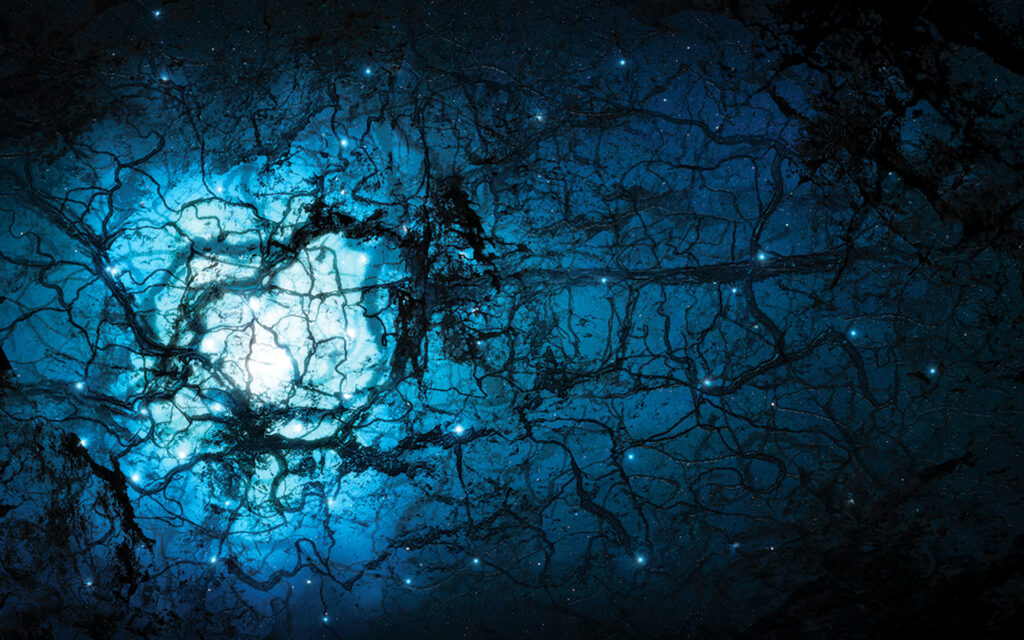
Look up at the night sky. It feels eternal and constant, doesn’t it? The stars we see are the same ones our ancestors marveled at. For most of human history, we believed the cosmos, at its largest scale, was essentially static. Even after we discovered the universe was expanding from a Big Bang, we told ourselves a logical story: that expansion must be slowing down. After all, gravity—the great cosmic glue—is constantly pulling everything together. It made perfect sense.
But the universe, it turns out, loves a good plot twist.
In the late 1990s, two teams of astronomers were doing what seemed like a straightforward measurement of this cosmic slowdown. Instead, they uncovered the most profound and baffling discovery in modern cosmology: the universe’s expansion isn’t slowing down at all. It’s speeding up.
Something is fighting back against gravity, winning a cosmic tug-of-war, and stretching the very fabric of space apart at an ever-increasing rate. That “something” is the greatest mystery in physics. We call it Dark Energy. This invisible, ethereal force makes up a staggering 68% of everything that exists, and we have no idea what it is. Let’s embark on a journey to understand this cosmic phantom—the evidence for it, the theories about it, and how it holds the key to the ultimate fate of everything we know.
The Cosmic Shock: The Moment We Realized We Were Wrong
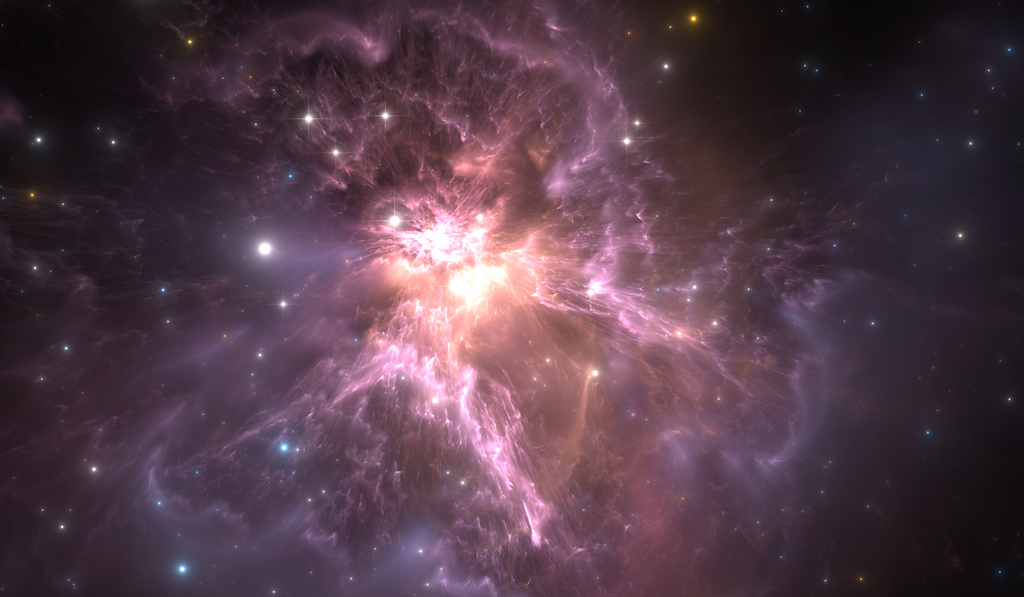
The story begins with a specific kind of cosmic bomb: a Type Ia supernova. These aren’t just any stellar explosions; they’re what astronomers call “standard candles.” Imagine you have a collection of 100-watt light bulbs. If you know they’re all exactly 100 watts, you can figure out how far away each one is by how dim it appears. A Type Ia supernova is the universe’s 100-watt light bulb. It happens in a specific, predictable way, always reaching roughly the same peak brightness.
This made them the perfect tool for two rival teams, one led by Saul Perlmutter and the other by Brian Schmidt and Adam Riess. Their goal was to measure the deceleration of the universe by looking at these supernovae in distant galaxies. They expected to see that the older, more distant supernovae were a little brighter than expected, indicating the universe was expanding more slowly in the past (as gravity was putting the brakes on).
What they found was the exact opposite.
The distant supernovae were dimmer. This meant they were much farther away than anyone had predicted. The only possible explanation was that the universe wasn’t slowing down; it was accelerating. The expansion of space itself was getting faster and faster over time.
The result was so shocking that the teams spent months checking and re-checking for errors—maybe interstellar dust was dimming the light? Perhaps the supernovae weren’t such perfect standard candles after all? But the data held firm. In 1998, they announced their findings, and in 2011, they were awarded the Nobel Prize in Physics for a discovery that turned cosmology on its head. They didn’t find what they were looking for; they found something infinitely more interesting.
Dark Energy vs. Dark Matter: The Universe’s Ultimate Showdown
When you hear “dark,” you probably think of the same thing in both cases. But this is the universe’s greatest case of mistaken identity. Dark Energy and Dark Matter are two completely different, and in fact opposing, entities. To understand the cosmos, you have to understand their cosmic roles.
Let’s break it down with a simple analogy.
Think of Dark Matter as the invisible skeleton of the universe.
- What it does: It pulls. It has gravity, and a lot of it.
- Its job: We can’t see it, but we can see its gravitational effects. It’s the glue that holds galaxies and galaxy clusters together. Without the extra gravitational pull from Dark Matter, galaxies would spin themselves apart. It provides the cosmic infrastructure upon which visible matter collects.
- What it’s like: Imagine a ghostly, massive hand holding the stars in a galaxy together.
Now, think of Dark Energy as the mysterious, anti-gravity breath.
- What it does: It pushes. It creates a repulsive force that acts against gravity.
- Its job: It’s not holding anything together; it’s pushing everything apart. It’s the force that is accelerating the expansion of space itself on the very largest scales.
- What it’s like: Imagine someone blowing air into the balloon of our universe, causing it to expand faster and faster.
To put it into perspective, here’s the cosmic pie chart of the entire universe:
- Dark Energy: 68% – The dominant force, driving the cosmic acceleration.
- Dark Matter: 27% – The invisible scaffolding, shaping the cosmos.
- Normal Matter (everything we see: stars, planets, you, me): 5% – A mere sprinkle of visible stuff in a sea of darkness.
Let that sink in. Everything we can see, touch, and measure with our instruments—every galaxy, every black hole, every human being—accounts for just 5% of the universe. The other 95% is a complete mystery.
What Could Dark Energy Be? The Leading (and Mind-Bending) Theories
So, we know what Dark Energy does, but we have no idea what it is. This is where theoretical physicists earn their keep. The leading ideas are as fascinating as they are bizarre.
Theory #1: The Cosmological Constant (Vacuum Energy)
This is the current front-runner and also the most puzzling. It goes all the way back to Albert Einstein. When he was working on his theory of General Relativity, his equations showed the universe should be either expanding or contracting. But the prevailing belief at the time was in a static universe. So, Einstein inserted a “fudge factor” into his equations to hold the universe steady. He later called this his “biggest blunder” after Edwin Hubble discovered the universe was, in fact, expanding.
Well, Einstein might have been right for the wrong reason. The Cosmological Constant (represented by the Greek letter Lambda, Λ) is a concept that describes a constant energy density, a property of empty space itself. Even in a perfect vacuum, according to quantum physics, virtual particles are constantly flickering in and out of existence. This “vacuum energy” creates a negative pressure that pushes space apart.
The Problem? When physicists calculate how strong this vacuum energy should be based on quantum theory, the number they get is wrong. Not just a little wrong. It’s about 10^120 (that’s a 1 followed by 120 zeros) times too large. It’s the worst prediction in the history of physics. If it were that strong, the universe would have been torn apart before stars or galaxies ever formed. So, the mystery deepens.
Theory #2: Quintessence
If you don’t like the Cosmological Constant, maybe you’d prefer Quintessence. This theory proposes that Dark Energy isn’t a constant at all, but a dynamic, evolving force field that permeates all of space. The name comes from the ancient Greek “fifth element,” a substance beyond earth, air, fire, and water.
Unlike the static Cosmological Constant, Quintessence could change over time. It could have been weaker in the past and could be stronger now, or vice versa. This would mean the acceleration of the universe hasn’t always been the same and could change again in the future. It’s a more flexible idea, but so far, we have no direct evidence for it.
Theory #3: A Flaw in General Relativity
This is the most radical idea of all. What if there is no “Dark Energy”? What if Einstein’s theory of General Relativity, which has been spectacularly successful for a century, breaks down on the scale of the entire universe?
Perhaps our understanding of gravity is incomplete. Just as Newton’s laws needed an update from Einstein for extreme speeds and gravity, maybe General Relativity needs an update for the vast, cosmic scale. We might need a new theory of gravity that naturally explains the accelerating expansion without inventing a new, mysterious form of energy.
How Do We Study the Invisible? The Tools of the Trade
You might be wondering: “How can you study something you can’t see, touch, or interact with?” It’s all about measuring its effects on the things we can see. We’re essentially cosmic detectives, and our tools are some of the most advanced machines ever built.
- The Hubble and James Webb Space Telescopes: These legendary observatories continue to peer deeper into space and further back in time. By observing distant supernovae and quasars, they help us map the expansion history of the universe with ever-greater precision, putting the squeeze on our theories about Dark Energy.
- The Dark Energy Survey (DES): This was a ground-based project that used a powerful digital camera on a telescope in Chile to map hundreds of millions of galaxies. By studying the large-scale cosmic structures—the “cosmic web”—it helped measure the relentless push of Dark Energy over the last billion years.
- The Vera C. Rubin Observatory (LSST): This is the next giant leap. Scheduled to see first light soon, this observatory in Chile will conduct a 10-year survey of the sky, creating an unprecedented movie of the cosmos. It will catalog billions of galaxies and supernovae, providing a dataset so vast it will transform our understanding of Dark Energy.
- ESA’s Euclid Mission: This is a dedicated space telescope, launched specifically to investigate the Dark Universe. It will create an incredibly detailed 3D map of the universe, tracing the subtle ways Dark Energy has shaped the distribution of galaxies over cosmic time.
The Final Fate: How Dark Energy Dictates the Destiny of the Cosmos
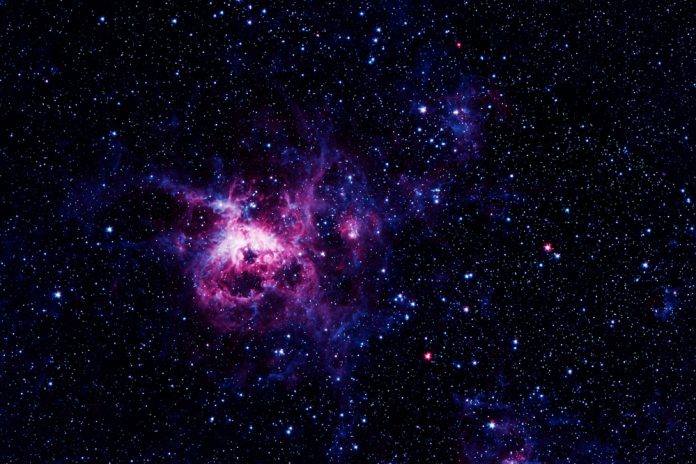
The nature of Dark Energy isn’t just an academic curiosity. It literally holds the key to the ultimate fate of everything. The story of the universe’s end depends entirely on which theory about Dark Energy is correct.
- Scenario 1: The “Big Rip” – What if Dark Energy’s repulsive force grows stronger over time? In this terrifying finale, the acceleration would eventually overcome all other forces. First, galaxy clusters would be torn apart. Then, individual galaxies. Then, the solar system. In the final moments, the force would be so strong it would rip apart stars, planets, and even atoms and nuclei themselves. The universe would end as a thin, cold haze of isolated particles.
- Scenario 2: The “Heat Death” or “Big Freeze” – This is the most likely outcome if the Cosmological Constant is correct and Dark Energy remains steady. The acceleration continues at its current rate. Galaxies beyond our local group will eventually be pushed so far away that their light can never reach us. Over trillions of years, stars will burn out, black holes will evaporate, and the universe will become a vast, dark, cold, and empty void—a state of maximum entropy.
- Scenario 3: A “Big Crunch” Revisited? – If Quintessence weakens and reverses, gravity could ultimately win. The expansion would slow, stop, and then reverse. The entire universe would come crashing back together in a fiery collapse into a singularity—a mirror image of the Big Bang. (It’s important to note that current evidence makes this scenario very unlikely).
The Greatest Mystery
Dark Energy is the ultimate humbler. It reminds us that, for all our knowledge, we are still just beginning to understand the cosmos. It is the dominant component of reality, the engine driving the evolution of the universe, and a complete enigma.
It’s a blank check for a scientific revolution. Unraveling this mystery could lead us to a new theory of physics, a deeper understanding of space and time, and finally, an answer to the oldest question of all: What is our universe, and what will it become?
The search for Dark Energy is more than a scientific pursuit; it’s a quest to understand our own place in a cosmos that is far stranger and more wonderful than we ever imagined.
What do you think dark energy is? A new field, a flaw in our theories, or something beyond our current imagination? Share your thoughts in the comments!
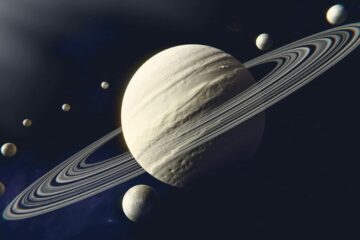
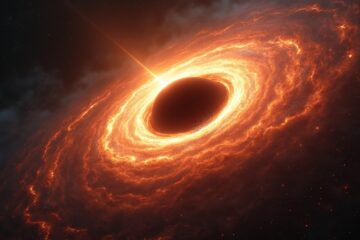

0 Comments